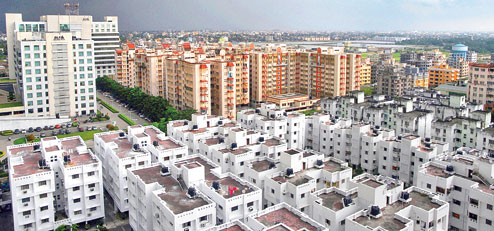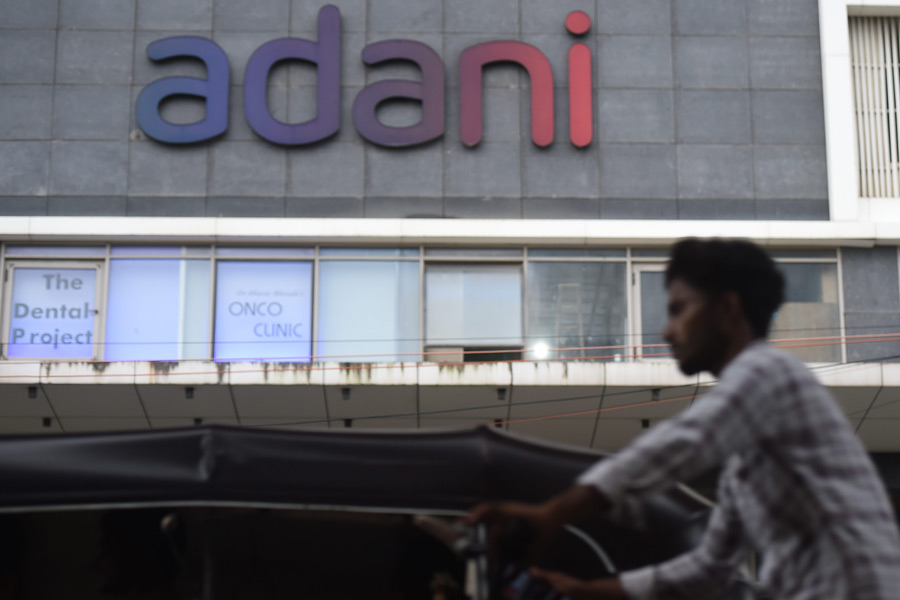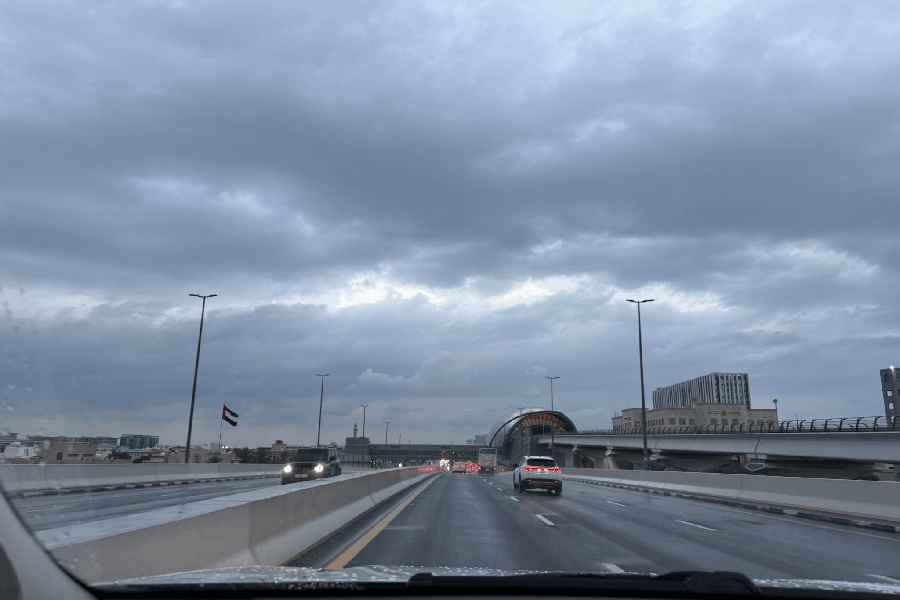
New Town, the destination being promoted by the state government, is suffering from a vacancy syndrome. Though attracting residents at the beginning has always been a challenge for any new township, experts feel New Town’s problem runs deeper — and may be more permanent in nature — than the usual early hiccups.
New Town was conceived in 1994, detailed planning was made in 1996 and the allotment of land started around 2000 but 17 years down the line, the township still seems quite some distance away from the expected growth route that was charted at the beginning.
“It’s a fact that New Town is suffering from vacancy syndrome. While a significant number of plots have not developed despite being taken long time back even the actual occupancy within built-up buildings is reasonably low,” admitted Debashis Sen, chairman of New Town Kolkata Development Authority (NKDA), during a recent meeting organised by IIT Kharagpur on future cities in the township. “The township is designed for a population of about 10 lakh residents and we have a much less resident population so far though there is a reasonable floating population. We recently called up the owners of vacant plots and indicated that the land may be taken back unless construction begins soon. It seems that will yield some dividends,” said Sen to The Telegraph Salt Lake.
Urban development minister Firhad Hakim echoed the concern. “The government does not want to take away your land; but do not take space and leave it unutilised … this is creating social problems,” he said recently at a Housing and Infra-structure Development Corporation (Hidco) programme at the Book Fair while announcing the initiation of the application process for a cluster of plots in New Town. In fact, one of the conditions laid down for the lease of the new plots is that the lessee will have to start building within five years of the execution of the deed of lease otherwise Hidco “may exercise the right of pre-emption”.
According to the 2011 census, about 40,000 people live in New Town. The number may have reached close to 50,000 now.
SLOW START
An official explained that service sector facilities like transport, market or health services are not growing as they remain financially unviable in the absence of population whom they can cater to. “It’s like a chicken and egg scenario. As people are not coming, the service sector is not growing; and as the service sector is not growing, people are not attracted to come and settle here,” stated Mahalaya Chatterjee, an urban economics expert with Calcutta University.
“If one compares the population growth of Durgapur or Haldia in their early years after formation to that of New Town, it becomes amply clear that New Town’s attractiveness index is significantly lower to the earlier two,” observed Joy Karmakar, a researcher on new cities in the same department.
Prabir Roychowdhury, managing director of The Banyan Tree group who has promoted projects on the fringes of New Town, admitted to the problems. “Since this area is IT sector-oriented, people book apartments when they are in Calcutta and then leave town, keeping the property under lock and key. Some stay in the city proper in joint families but see an apartment in New Town as an investment option to get tax benefits. They sell off when they get a good margin. Then there are professional investors who book the flats in prime positions in bulk on condition that we accept their nominees, pay us the first couple of installments and then sell off at margin. They succeed in 90 per cent cases but 10 per cent flats get stuck. The projects in Action Area 1 are well-occupied but quite a few complexes in Action Area II and III are 30 per cent vacant,” he said.
Vacancy takes a toll on the health of the property. Since the water of New Town is high in iron content, the plumbing line starts to get jammed, the cisterns rust and the doors fall prey to termites. “When we get complaints from other occupants, we inform the owners and if they are unable to come and undertake the repairs, we break the lock keeping a witness, do the needful and raise a bill in the owner’s name,” Roychowdhury said.
He feels the government needs to complete building the roads. “Two roads adjacent to Major Arterial Road by barely half a kilometre are incomplete in patches. If one is approaching from the Sector V side, there are two stretches missing on the road to the right of MAR — one is behind Srishti Hotel and the other near Amity University. Another road from Hatiara to Jatragachhi has a 300 yard incomplete stretch. Nothing can ply on these roads because of these gaps. If the roads are built, there would be bus routes, shops would open and people who have bought plots on the road would be encouraged to come and stay,” he said.
NO MIDDLE CLASS PLEASE
Experts feel that the “no middle class policy” — unwritten but spelt out everywhere — has been the bane of the new city. Unlike Salt Lake, where accommodating middle class was an announced objective, New Town’s target has always been people from financially upper echelons. For most of these families, including non-resident ones, housing at New Town has been an investment rather than actual destination. “Unlike Salt Lake, New Town may be the second even third dwelling option for many of the buyers,” said Arunabha Majumdar, a former director-professor at All India Institute of Hygiene and Public Health who has been living in AA Block, Salt Lake, for 38 years. “The middle class is like salt and sugar to the development of any city, particularly its social infrastructure. In Rajarhat that has hardly happened so far,” observed Prof Joy Sen of IIT Kharagpur. Sen pointed out that overbearing large physical infrastructure, often incomplete, without facilitation of social infrastructure, has also proved to be the weakness of New Town like in other new townships of the country like Gurgaon or Rohini.
“It’s not that the middle class is totally absent. Many, through cooperatives, have procured plots. But be it stagnancy of development in the area or high demands of syndicates supplying building materials or some internal conflict within cooperative members, many of these plots have remained vacant or partially built so far. Due to paucity of public transport, it’s also very difficult for the middle class to commute from New Town to various destinations in Calcutta,” said a New Town flat owner who works in south Calcutta.
Others point out that apart from transport other facilities required by the middle class are also hardly there. “New Town has the much talked-about Eco Park, but not too many small parks around the corner, no quality government school or hospital, no proper market apart from the malls… How can people from the middle income group possibly choose the area for permanent habitation?” questioned Aniruddha Mukherjee, an educationist who lives in Bhowanipore and spends the weekends in an apartment in New Town’s CC Block.
Incidentally an NKDA review has shown that while close to 10 per cent shop spaces are yet to be allotted in 10 markets built in New Town, many already allotted shops are yet to open.
"Only large buildings will not do. Where is the proper grid of roads, internal public transport as well adequate external connectivity, waste management infrastructure on quality drinking water supply in all the areas of New Town?" questioned Tapas Ghatak, an urban planner formerly with the Calcutta Municipal Development Authority who stays in EE Block. Residents pointed out that safety remains a worry with empty plots and dimly lit internal roads which often turn into havens of vandals after sundown, a point also raised by minister Hakim at the Book Fair meet.
Green is only in brochure
Though almost all new constructions in the township flaunt greenery in its publicity brochures, ironically, the city has come up by filling sprawling wetlands. Greenery is also hardly adequate and there has been no effort to plant appropriate tree varieties which can attract birds and suck ??? dust. The city does not yet have a scientific solid waste disposal mechanism as well. More importantly, the signature township in Bengal is suffering from acute air pollution with dust coming out from large scale constructions across its length and breadth with minimum measures for dust control. "It's almost unbearable. A few months back, we complained to the state pollution control board about the severe dust arising out from a construction near our building," said Krishnajyoti Goswami, a professional who has a flat in the township. "The elderly and children get highly affected especially during winter when the air pollution level remains very high," he added.
The Telegraph Salt Lake accessed the state pollution control board data and found that during winter the toxic fine particulate pollutant level here generally remains 2.5 times above nationally permissible limit.
"Such a big township has come up without proper environment impact assessment study. They were only forced to undertake one hastily and, I guess, it was inadequately done one when I petitioned in court about the issue and the court directed state government to undertake the study," claimed environmentalist Subhas Datta.
Policy pricks the bubble
A report prepared by international property consultancy Jones Lang LaSalle has pointed out that real estate in Rajarhat has performed "lower than expected" because of the state government's stand on special economic zones. "Rajarhat enjoyed speculative growth three to five years ago, but it was not matched by a good rate of growth in infrastructure. Overall, Rajarhat hasn't been able to drive the kind of economic and employment-generating activity that was initially planned," Ashutosh Limaye, national director of research at Jones Lang LaSalle, states in his report on Rajarhat. The report also claims that real estate in Rajarhat, "long regarded as the bellwether of growth in Bengal, is bleeding with one in three units vacant" and linked the trend with the curtailed expansion plans of DLF, Unitech and even local builders like Ambuja Neotia and the Mani Group.
Experts are also blaming the urban design of Rajarhat. "Unlike Calcutta proper, Rajarhat has a gated-community design which is wrong and, by design, will make people captive to cars. And those who cannot afford it, will largely remain excluded," stated Anumita Roy Chowdhury of the Centre for Science and Environment. Walking is also not conducive because the place is hardly pedestrian-friendly. Many contrast Rajarhat with Salt Lake; where the emphasis is on the neighbourhood concept, with a prevailing sense of community. "Rajarhat hardly has a sense of community as small decentralised public-level spaces are altogether absent. It is driven by too large, on your face kind, physical infrastructures which are exclusive by design," alleged a resident.
As a result, the township has less resident population that expected and that too is dominated by IT sector professionals, who work in the IT companies of Rajarhat and Sector V of Salt Lake and rent out to stay in the vicinity. "These people never take Rajarhat as home and hardly have any sense of ownership of the city. Unless a city is owned by people, it will not succeed," observed an expert.
No surprise that Rajarhat has come up as a holiday destination for many in and around Calcutta - be it to frequent Eco Park or Rabindra Tirtha - but not as permanent residence.
"We expect the situation to change over the next few years especially with Metro Rail coming up," observed a senior official of HIDCO.
Additional reporting by Sudeshna Banerjee
What else needs to be done to make more people settle in New Town?
Write to The Telegraph Salt Lake, 6 Prafulla Sarkar Street, Calcutta 700001 or email to saltlake@abpmail.com










